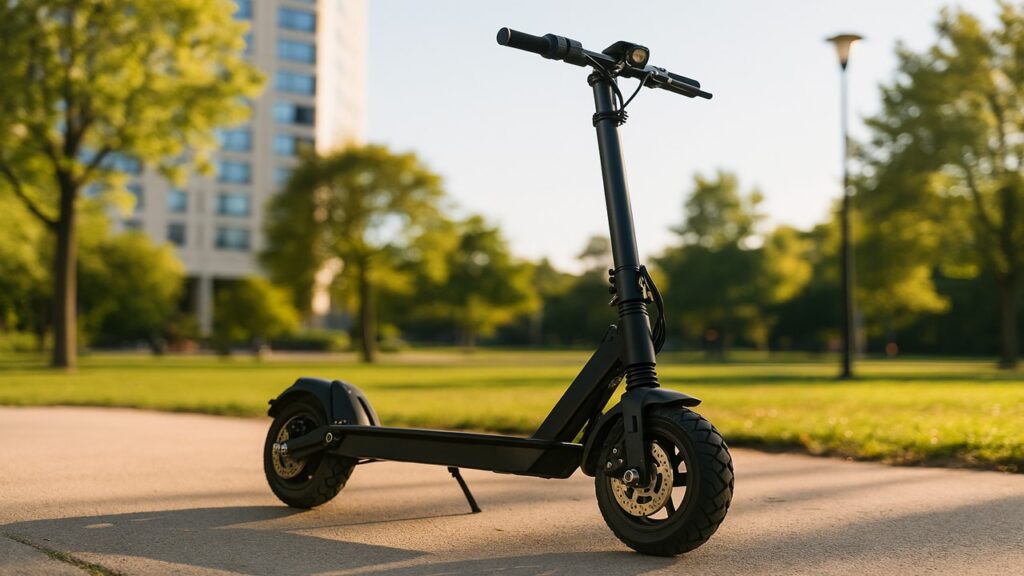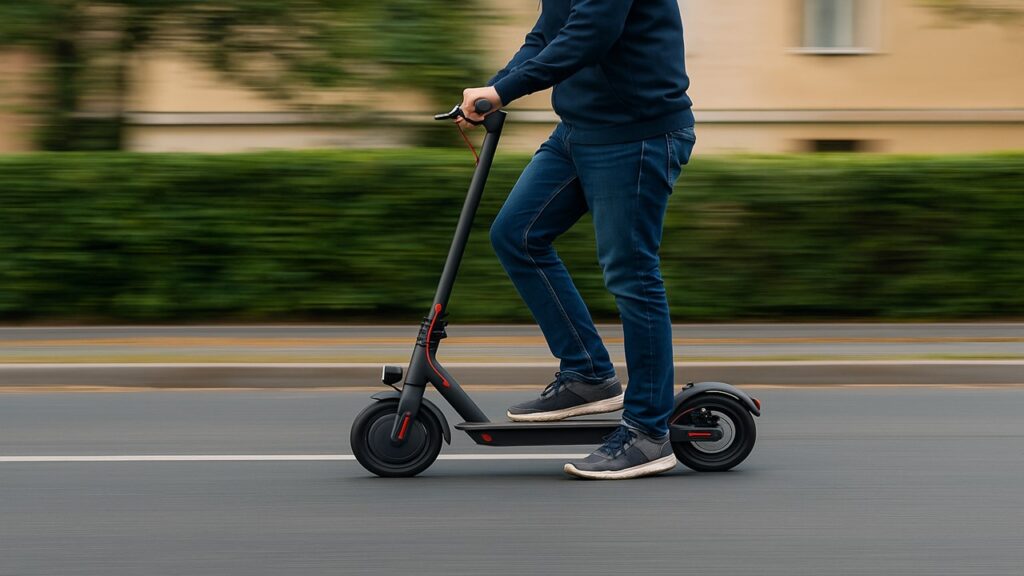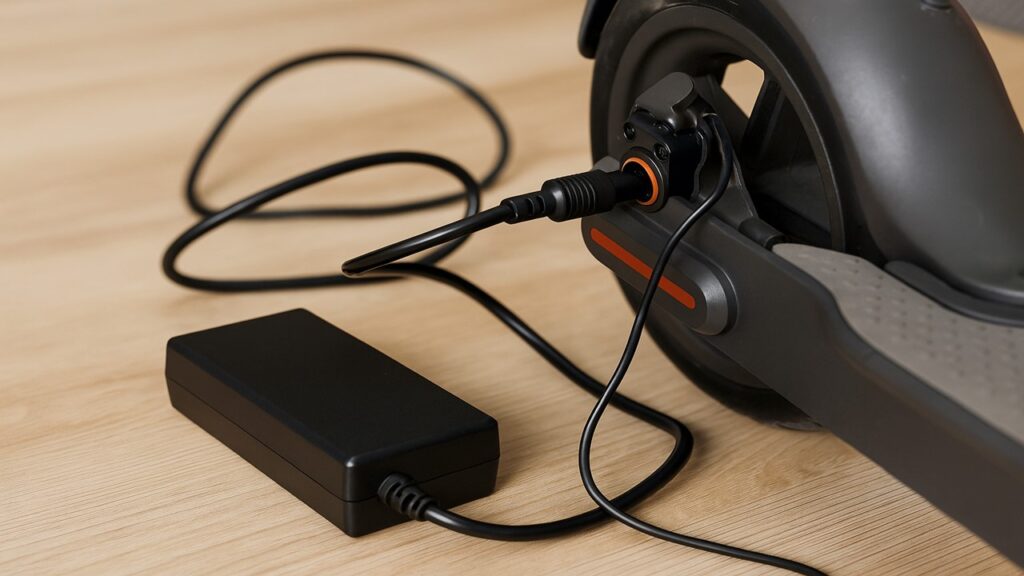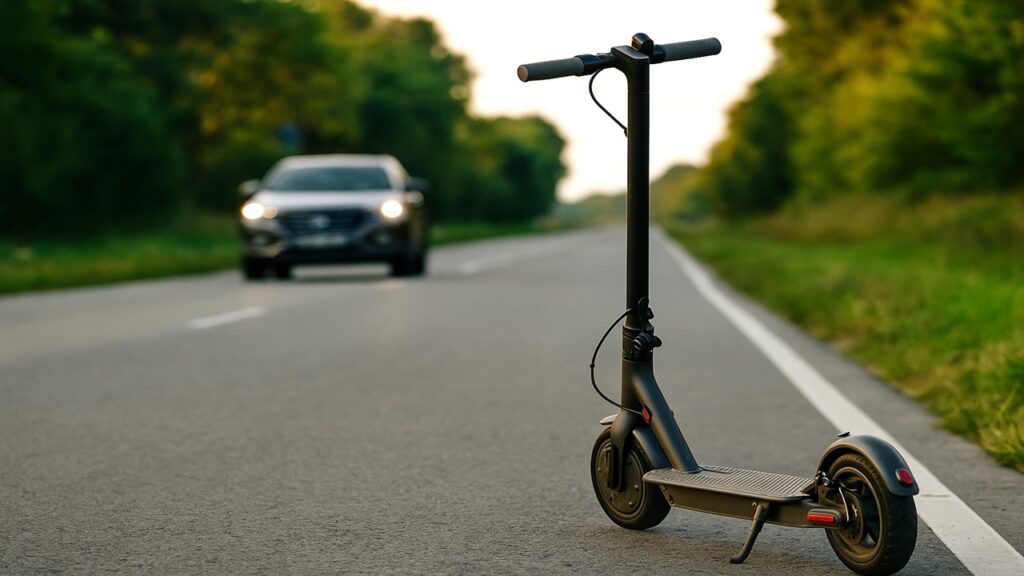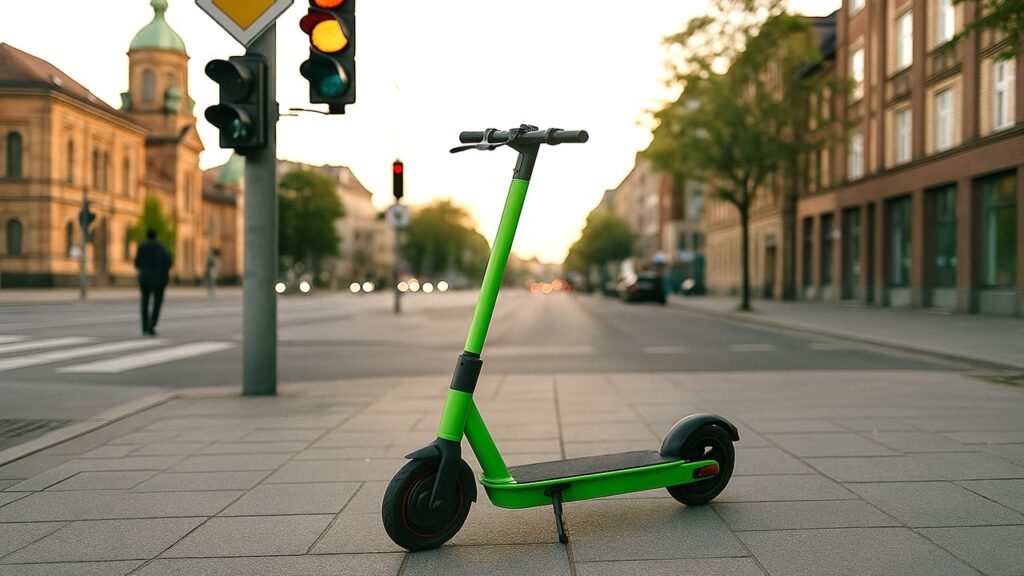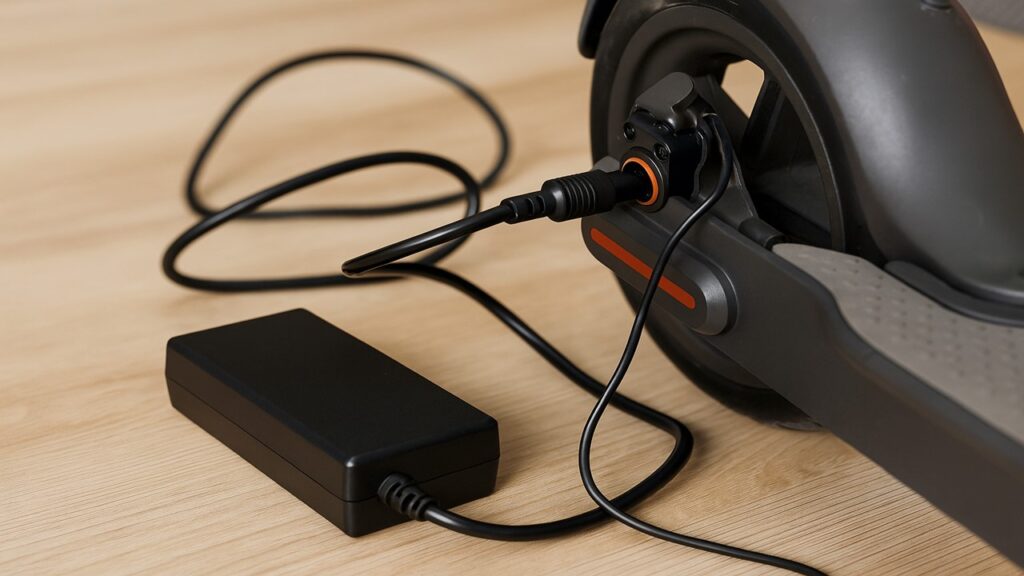
Charging an electric scooter may seem simple, but doing it correctly is key to battery health, safety, and long-term performance.
Knowing how to charge an electric scooter the right way helps extend its lifespan, prevent common issues, and ensure every ride starts with reliable power.
Key Summary
- Most electric scooters use lithium-ion batteries that typically last between 500 and 1000 charge cycles.
- The battery lasts longer when recharged before it drops too low and unplugged once it reaches around 80–90 percent.
- Safe charging means using the correct charger in a dry, ventilated space and avoiding extreme hot or cold conditions.
- Proper battery care improves scooter performance, extends riding range, and ensures long-term reliability.
What Type of Battery Does an Electric Scooter Use?
Most modern electric scooters use lithium-ion batteries, which are lighter, recharge faster, and last longer compared to older lead-acid options. An electric scooter battery typically lasts 500 to 1000 charge cycles, depending on how it’s charged and maintained. This means proper charging habits directly affect both performance and long-term value.
How to Charge an Electric Scooter (Step-by-Step)
To charge an electric scooter, plug the charger into a wall outlet first, then connect it securely to the scooter’s charging port. Let the battery cool before charging, monitor the indicator light until it shows full, and always disconnect from the scooter before unplugging from the wall.
Let’s go through each step in detail so you can charge safely and keep your battery in good health.
Step 1: Choose a Safe Charging Area
Always charge your scooter in a dry, flat, and well-ventilated space. Avoid damp areas, outdoor charging during rain, or surfaces near flammable materials. A stable surface keeps the scooter from tipping, while good airflow helps prevent the battery from overheating.
Step 2: Turn Off and Cool Down
After riding, allow the scooter’s battery to cool for at least 15–30 minutes before plugging it in. Lithium-ion batteries generate heat during use, and charging while hot can shorten lifespan and, in rare cases, pose a safety risk. Turning off the scooter also prevents unnecessary energy draw while charging.
Step 3: Inspect Charger and Charging Port
Before connecting the charger, check that the charger, cables, and charging port are free from dust, debris, or damage. A clean, undamaged connection ensures efficient charging and reduces the chance of short circuits. Using a soft cloth or compressed air to keep the port clear helps maintain reliability over time.
Step 4: Plug Charger into Wall First
Insert the charger into the wall outlet before connecting it to the scooter. This reduces the chance of sudden surges or sparking that could damage the charger or the battery. Make sure the outlet is stable and not overloaded with other devices.
Step 5: Connect Charger to Scooter
Locate the scooter’s charging port, usually protected by a rubber or plastic cap. Open it and plug in the charging cable until it fits securely. Loose connections can cause slow charging or interruptions, so confirm that the plug is firmly in place.
Step 6: Monitor Charging Progress
Most chargers use an indicator light to show charging status. A red or orange light means the scooter is charging, while a green light means the battery is full. Some scooters also display charging progress on a built-in screen or companion app. Checking occasionally ensures everything is working as expected.
Step 7: Disconnect Safely
Once the scooter is fully charged, unplug the charger from the scooter first, then disconnect it from the wall. This prevents unnecessary current flow and reduces wear on the charging port. Always grip the plug directly rather than pulling on the cable.
Step 8: Let the Battery Rest Before Riding
After charging, allow the battery to rest for 5–10 minutes before switching the scooter on. Charging generates heat, and giving the battery a short break helps maintain efficiency and supports long-term performance.
Safety Precautions When Charging
Always charge an electric scooter in a dry, ventilated space with the correct charger, and avoid extreme heat or moisture.
Charging safety is about both protecting your battery and preventing hazards. Lithium-ion batteries are sensitive to temperature, so never charge in direct sunlight, near heaters, or below freezing conditions.
Using only manufacturer-approved chargers is essential, since uncertified models may cause overheating or permanent damage. A safe charging routine also includes closing the port cover after charging to keep out dust and moisture.
Common Charging Mistakes to Avoid
Many riders unknowingly shorten their scooter’s battery life by making simple charging mistakes. Avoid these habits to keep your battery safe and lasting longer:
- Letting the battery drain completely to 0% before recharging
- Leaving the scooter plugged in overnight, which risks overheating
- Using cheap or uncertified chargers that can damage the battery
- Charging immediately after a ride when the battery is still hot
- Storing the scooter fully discharged for long periods, which harms lithium-ion cells
How to Extend Electric Scooter Battery Life
To extend electric scooter battery life, recharge before it drops below 20%, avoid leaving it fully charged for long periods, and store at 40–60% if unused.
Lithium-ion batteries perform best with partial top-ups rather than deep discharges. Instead of waiting for 0%, recharge when the level hits around 20–30%. This reduces stress on the cells and preserves long-term health.
If you won’t ride for weeks, charge the battery halfway and keep it in a cool, dry place. Storing at extreme full or empty levels leads to permanent capacity loss. Cleaning the charging port regularly and avoiding harsh climates with protective covers are small steps that also make a big difference in lifespan.
Troubleshooting Charging Issues
If your electric scooter isn’t charging, check the outlet, charger, and charging port for damage or poor connections.
Things to check:
- Power source: Test outlet with another device.
- Charger: Confirm LED indicator shows power.
- Cables: Inspect for cuts, wear, or loose plugs.
- Charging port: Look for dirt, corrosion, or bent pins.
- Battery health: Swelling, leaks, or overheating may signal replacement.
- Scooter electronics: If fully charged but won’t turn on, check connections or consult a technician.
Final Words
Charging an electric scooter the right way is more than just plugging it in—it’s about protecting the battery, extending its lifespan, and keeping every ride safe.
Using the correct charger, avoiding extreme conditions, and sticking to simple habits like recharging before the battery runs too low can make a big difference in long-term performance.
By following the step-by-step guide, avoiding common mistakes, and practicing smart battery care, you’ll not only get the most out of each charge but also keep your scooter running reliably for years. Treat the battery as the heart of your scooter, and it will return the favor with better range, consistent power, and safer rides.
FAQs
How long does it take to charge an electric scooter?
Charging an electric scooter usually takes between 3 to 8 hours, depending on the battery size and charger type. Smaller batteries charge faster, while larger high-capacity models may take longer.
Can I charge my scooter overnight?
Most modern scooters have a Battery Management System (BMS) that prevents overcharging, so overnight charging is generally safe. However, unplugging after a full charge is still better for long-term battery health.
How often should I charge my scooter?
You should recharge when the battery drops to about 20–30% and ideally unplug at around 80–90%. Charging little and often helps lithium-ion batteries last longer than deep discharges.
How do I know if my scooter is charging?
Most chargers use an LED indicator: red or orange means charging, green means full. Some scooters also show progress on their display screen or voltmeter.
Can I charge without the original charger?
It’s not recommended to charge without the original or manufacturer-approved charger. Using an incorrect charger can damage the battery, shorten its lifespan, and may void the warranty.

At our core, we’re a group of passionate scooter enthusiasts. We dive deep into the world of tech, especially when it’s about your everyday usable scooters to make riding convinient. We try to provide as much value to the readers with our information and how to blog articles as possible. We take great satisfaction in offering unbiased evaluations, ensuring that you can make informed decisions when investing in your desired scooters and riding equipments.






